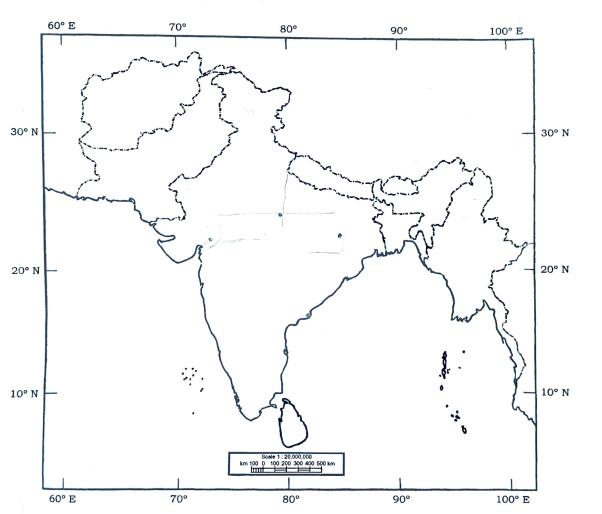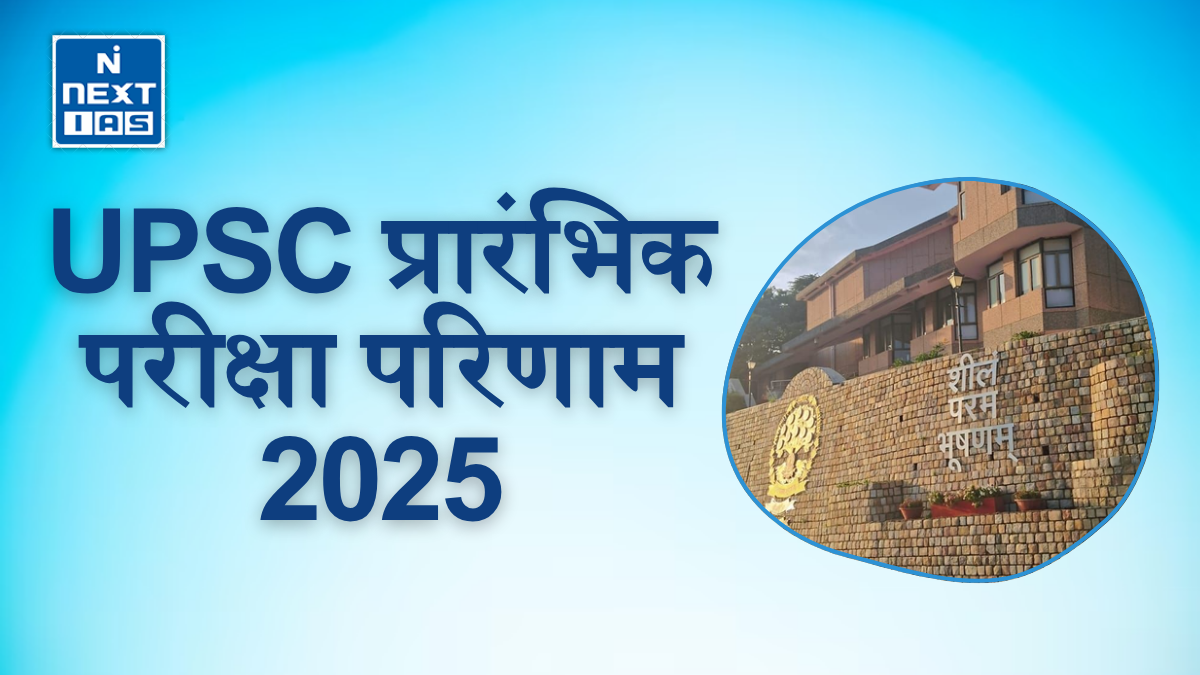
The UPSC conducted the CSE Mains 2024 Geography Optional Paper on September 29th, 2024, marking a significant milestone for aspirants. This examination assessed candidates on a wide range of topics, covering both theoretical and applied aspects of Geography, and tested their core concepts, analytical skills, and ability to connect geographical knowledge to current global and regional issues. For future aspirants, understanding this year’s trends and questions is crucial for an in-depth analysis of the subject and syllabus, emphasising the importance of a solid grasp of fundamentals and their relevance to contemporary events.
| Exam Name | UPSC Civil Services Mains Exam 2024 |
| Total Optional Subjects in the UPSC CSE Exam | 48 subjects |
| UPSC Geography Optional Exam Date | September 29th, 2024 |
| UPSC Geography Optional Paper Duration | Geography Optional Paper-I (Morning Session – 9 AM to 12 PM) Geography Optional Paper-II (Afternoon Session – 2:30 PM to 5:30 PM) |
| Total Marks (Geography Optional) | 500 Marks (250 Marks Each) |
UPSC Mains 2024 Geography Optional Paper-I
खण्ड A SECTION A
Q1. निम्नलिखित में से प्रत्येक का लगभग 150 शब्दों में उत्तर दीजिए:
Answer the following in about 150 words each: (10 x 5 = 50)
(a) ‘रुडित पर्वत-स्कन्ध’ क्या होते हैं? ये कहाँ और कैसे बनते हैं?
What are truncated spurs’? Where and how are they formed? 10 Marks
(b) शीतोष्ण चक्रवात का निर्माण फैलाव अक्ष की स्थिति पर निर्भर करता है। स्पष्ट कीजिए।
Formation of temperate cyclone depends on the condition of axis of dilation. Elucidate. 10 Marks
(c) उपयुक्त उदाहरणों सहित समुद्र-स्तर में परिवर्तन लाने वाले कारकों की व्याख्या कीजिए।
With suitable examples explain the factors causing sea level changes. 10 Marks
(d) ग्रामीण क्षेत्रों के सामाजिक-आर्थिक परिवर्तन में सामाजिक वानिकी के प्रभावों का परीक्षण कीजिए।
Examine the impacts of social forestry in socio-economic transformation of rural areas. 10 Marks
(e) पर्वतीय क्षेत्र पारिस्थितिकी परिवर्तनों के प्रति अधिक भंगुर हैं। स्पष्ट कीजिए।
Mountain regions are more fragile to ecological changes. Elucidate. 10 Marks
Q2. (a) पर्वत निर्माणकारी प्रक्रिया के नवीनतम दृष्टिकोणों का परीक्षण कीजिए तथा उत्पत्ति के आधार पर विभाजित कीजिए।
Examine the recent views on mountain building process and divide the world mountains on the basis of their genesis . 20 Marks
(b) विश्व जलवायु के कोपेन के वर्गीकरण के अक्षांशीय वितरण का वर्णन कीजिए।
Describe latitudinal distribution of Köppen’s classification of world climate. 15 Marks
(c) हिन्द महासागर की तलीय स्थलाकृति को उपयुक्त रेखाचित्रों द्वारा विस्तार से समझाइए।
With suitable sketches elaborate the bottom topography of the Indian Ocean. 15 Marks
Q3. (a) वायु संहतियाँ (राशियाँ) एवं संबंधित मौसम गतिकी की व्याख्या कीजिए। वायु संहतियाँ (राशियाँ) किस प्रकार उत्तरी गोलार्ध के मौसम हालात को प्रभावित करती हैं?
Explain air masses and associated weather dynamics. How do air masses influence the weather conditions of the Northern Hemisphere? 20 Marks
(b) “मृदा अपरदन रेंगती हुई मौत है।” कथन की व्याख्या करते हुए, मृदा संरक्षण के विभिन्न उपायों को सुझाइए।
“Soil erosion is creeping death.” Explaining the statement, suggest various soil conservation measures. 15 Marks
(c) अनुभूति, अभिवृत्ति, महत्त्व एवं भावना (पी.ए. बी.ई.), जैव-विविधता एवं सतत पर्यावरणीय संरक्षण के महत्त्वपूर्ण अवयव हैं। विस्तार से समझाइए।
Perception, Attitude, Value and Emotion (PAVE) are important components for biodiversity and sustainable environmental conservation. Elaborate. 15 Marks
Q4. (a) भविष्य में पर्यावरणीय संरक्षण के लिए कार्बन तटस्थता कैसे आवश्यक है? इसके संबंध में राष्ट्रों द्वारा किए गए विभिन्न प्रयासों का वर्णन कीजिए।
How is carbon neutrality essential for future environmental conservation? Describe various efforts taken by nations in this regard. 20 Marks
(b) बाजू धारा किसे कहते हैं? याजू द्रोणी बार-बार बाढ़ के क्षेत्र क्यों हैं? विश्व के विभिन्न भागों से याजू धारा क्षेत्रों के उदाहरण दीजिए। What is a Yazoo stream? Why are Yazoo basins the areas of repeated flooding? Give examples of Yazoo stream/areas from various parts of the world.15 Marks
(c)”प्रजातियों की समृद्धि में अक्षांशीय प्रवणता, जैव-विविधता में एक महत्त्वपूर्ण भौगोलिक प्रवृत्ति है।” कथन का परीक्षण कीजिए।”
The latitudinal gradient in species richness is an important geographic trend in biodiversity.” Examine the statement. 15 Marks
खण्ड B SECTION B
Q5. निम्नलिखित में से प्रत्येक का लगभग 150 शब्दों में उत्तर दीजिए: Answer the following in about 150 words each: 10×5=50
(a) मानव भूगोल के विकास में व्यवहारपरक उपागम के महत्त्व का आलोचनात्मक परीक्षण कीजिए। Critically examine the significance of Behavioural Approach in the development of human geography. 10 Marks
(b) “हालांकि जल संसाधनों की कमी स्थानीय स्तर पर महसूस होती है, परन्तु इसके कारण तेज़ी से वैश्विक होते जा रहे हैं।” टिप्पणी कीजिए।
“While scarcity of water resources are felt locally, but its causes are increasingly global.” Comment. 10 Marks
(c) महानगरों के आर्थिक मूल के रूप में केन्द्रीय व्यापार क्षेत्र (सी.बी.डी.) पतन में हैं। आलोचनात्मक परीक्षण कीजिए।
Central Business Districta (CBDs) are in decline as the economic core of metropolitan cities. Critically examine. 10 Marks
(d) लिंग-संवेदनशील प्रादेशिक विकास की आवश्यकता है। विस्तार से समझाइए ।
There is a need for gender-sensitive regional development. Elaborate. 10 Marks
(e) रोस्टीव मॉडल द्वारा प्रस्तावित आर्थिक वृद्धि के सैद्धांतिक ढाँचे एवं चरणों की व्याख्या कीजिए।
Explain the theoretical framework and stages of economic growth proposed by Rostow’s model. 10 Marks
Q6. (a) शहरीकरण की प्रक्रिया विशेष रूप से एशिया एवं अफ्रीका में स्पष्ट है, जहाँ बहुतायत में शहरी निवासी अत्यधिक गरीबी, बहिष्कार, अतिसंवेदनशीलता एवं हाशिए पर रहने से जूझ रहे हैं। चर्चा कीजिए।
The urbanisation process is particularly pronounced in Asia and Africa, where too many urban residents grapple with extreme poverty, exclusion, vulnerability and marginalisation. Discuss. 20 Marks
(b) स्पष्ट कीजिए कि भौगोलिक स्थान के भौतिक दृश्य ने किस प्रकार से स्थानिक विश्लेषण के प्रारूपों को प्रभावित किया है।
Explain how the physical view of geographical space has impacted the forms of spatial analysis. 15 Marks
(c) विश्व के समकालीन भू-राजनीतिक परिदृश्य के संदर्भ में हृदय-स्थल (हॉर्टलैण्ड) सिद्धांत की व्याख्या कीजिए।
Explain the Heartland theory with reference to contemporary geopolitical scenario of the world. 15 Marks
Q7. (a) डी. ह्विटलेसी के विश्व कृषि प्रदेशों के वर्गीकरण के आधार की व्याख्या कीजिए।
Explain the basis of D. Whittlesey’s classification of agricultural regions of the world. 20 Marks
(b) पारराष्ट्रीयता क्या है? हाल की अवधि में प्रवासियों के पारराष्ट्रीय संबंधों का पैमाना एवं दायरा क्यों अत्यधिक बढ़ गया है?
What is Transnationalism? Why has the scale and scope of transnational linkages of diaspora multiplied in recent times? 15 Marks
(c) विकासात्मक योजना के लिए प्रदेशों के चयन में अपेक्षित मानदण्डों का आकलन कीजिए।
Assess the criteria required for selecting regions for developmental planning. 15 Marks
Q8. (a) पूरक प्रदेश क्या है? अधिवासों के पदानुक्रम के संदर्भ में, क्रिस्टालर द्वारा प्रतिपादित विभिन्न प्रकार के पूरक प्रदेशों का वर्णन कीजिए।
What is complementary region? With reference to hierarchy of settlements, describe the different types of complementary regions as proposed by Christaller. 20 Marks
(b) विश्व में सेमीकन्डक्टर के विनिर्माण में स्थानिक परिवर्तनों एवं उभरते प्रतिरूपों का विश्लेषण कीजिए।
Analyse the spatial changes and emerging patterns of semiconductor manufacturing in the world. 15 Marks
(c) “विकसित देशों में आने वाले कुछ दशकों तक जनसंख्या गतिकी में प्रजनन के बजाय प्रवास मुख्य चालक होगा।” कथन का परीक्षण कीजिए।
“In developed countries, migration rather than fertility will be the main driver of population dynamics over the next few decades.” Examine the statement. 15 Marks
UPSC Mains 2024 Geography Optional Paper-II
खण्ड A / SECTION A
1. (a) आपको दिए गए भारत के रेखा मानचित्र पर, निम्नलिखित सभी की स्थिति को अंकित कीजिए। अपनी क्यू० सी० ए० पुस्तिका में इन स्थानों में से प्रत्येक का भौतिक/वाणिज्यिक /आर्थिक/पारिस्थितिक/पर्यावरणीय / सांस्कृतिक महत्त्व अधिकतम 30 शब्दों में लिखिए :
On the outline map of India provided to you, mark the location of all of the following. Write in your QCA Booklet the significance of these locations, whether physical/commercial/economic/ecological/environmental/cultural, in not more than 30 words for each entry: 2×10=20
(i) लूणकरणसर Lunkaransar
(ii) गुआ Gua
(iii) रायडाक नदी Raidak River
(iv) एकता नगर Ekta Nagar
(v) चंदनवारी Chandanwari
(vi) बबीना Babina
(vii) तातिपाका Tatipaka
(viii) अलोग हवाईअड्डा Along Airport
(ix) कराईकल Karaikal
(x) पन्ना Panna

1. (b) शिवालिक के निर्माण के विभिन्न स्पष्टीकरणों के आधार की विवेचना कीजिए।
Discuss the basis of various explanations for the formation of Shiwalik. 10Marks
1. (c) संरक्षण व प्रजनन केन्द्र, गिद्ध संरक्षण की कार्य योजना, 2020-2025 के महत्त्वपूर्ण घटक हैं। क्यों?
Conservation and breeding centres are important components of the Action Plan for Vulture Conservation, 2020-2025. Why? 10Marks
1. (d) भारत के उत्तरी-पूर्वी प्रदेश भू-राजनीतिक रूप से संवेदनशील तथा रणनीतिक रूप से महत्त्वपूर्ण हैं। व्याख्या कीजिए।
North-Eastern States of India are geopolitically sensitive and strategically significant. Explain. 10Marks
2. (a) भारत में कृषि समृद्धि को नियंत्रित करने में संस्थागत कारक प्रमुख भूमिका निभा रहे हैं। साक्ष्य सहित पुष्टि कीजिए।
Institutional factors are playing a dominant role in controlling the agricultural prosperity in India. Justify with evidences. 20Marks
2. (b) भारतीय अंतरिक्ष नीति, 2023 अंतरिक्ष में वाणिज्यिक उपस्थिति का समर्थन करती है। इससे भारत के सामाजिक-आर्थिक विकास और सुरक्षा को किस प्रकार लाभ होगा?
The Indian Space Policy, 2023 supports the commercial presence in space. In what ways will it benefit the socio-economic development and security of India? 15Marks
2. (c) भारत में सन्नगरों के गठन की प्रक्रिया पर विवेचना कीजिए और उनकी समस्याओं का वर्णन कीजिए।
Discuss the process of formation of conurbations in India and describe their problems. 15Marks
3. (a) भारत में आर्थिक विकास में व्यापक क्षेत्रीय असमानताएँ हैं। प्रतिरूप, निहितार्थ और चुनौतियों की व्याख्या कीजिए।
India has wide-ranging regional disparities in economic development. Explain the patterns, implications and challenges. 20Marks
3. (b) भारत में हिमनदों की प्रकृति में विभिन्नताओं और जलवायु परिवर्तन के कारण उत्पन्न होने वाले मुद्दों पर चर्चा कीजिए।
Discuss the variations in nature of glaciers in India and the emerging issues due to climate change. 15Marks
3. (c) भारत में घरेलू पर्यटन में अपार स्थानीय संसाधन क्षमता है। कारणों एवं इसके विभिन्न आयामों की विवेचना कीजिए।
Domestic tourism in India has immense local resource potential. Discuss the reasons and its various dimensions. 15Marks
4. (a) प्रवासन क्षेत्रीय विषमताओं का प्रतिबिम्ब है। इसके उत्पत्ति स्थान व गंतव्य स्थान पर कौन-से सामाजिक-आर्थिक और जनसांख्यिकीय परिणाम अनुभव किए जाते हैं?
Migration is the reflection of regional disparities. What socio-economic and demographic consequences are experienced at the place of origin and destination? 20Marks
4.(b) भारत में विभिन्न जनजातीय क्षेत्र विकास कार्यक्रमों के सहित समालोचनात्मक विवेचना कीजिए। बावजूद, जनजातीय क्षेत्र अभी भी TN SP पिछड़े हुए हैं। उदाहरणों सहित समालोचनात्मक विवेचना कीजिए।
In spite of various tribal area development programmes in India, tribal areas still lag behind. Discuss critically with examples. 15Marks
4. (c) भारत में पानी की कमी विवादों और झगड़ों का एक महत्त्वपूर्ण कारण है। इसके स्थान-आधारित समाधान हेतु नवोन्मेषी तरीके सुझाइए।
Water-scarcity is an important cause of disputes and conflicts in India. Suggest innovative methods for location-based solutions. 15Marks
खण्ड B / SECTION B
Q5. निम्नलिखित में से प्रत्येक का लगभग 150 शब्दों में उत्तर दीजिए:
Answer the following in about 150 words each: 10×5=50
5. (a) भारत के कुछ हिस्सों में उच्च वार्षिक वर्षा के वितरण को भौगोलिक कारक कैसे प्रभावित कर रहे हैं?
How are geographic factors influencing the distribution of high annual rainfall in certain parts of India?
5. (b) भारतीय जनसंख्या बहुसंख्यक नस्लों से सम्बन्धित है। प्रमुख नस्लों के स्थानिक वितरण की विवेचना कीजिए।
Indian population belongs to large number of races. Discuss the spatial distribution of major races.
5. (c) भारतीय कृषि क्षेत्र पर प्रौद्योगिकी की परिवर्ती भूमिका का परीक्षण कीजिए।
Examine the transitional role of technology on Indian agriculture sector.
5. (d) भारत में सूखा-प्रवण क्षेत्रों के विकास हेतु क्षेत्र-विशिष्ट रणनीतियों का वर्णन कीजिए।
Describe the area-specific strategies for the development of drought-prone areas in India.
5. (e) भारत में बंदरगाहों और क्षेत्रीय विकास के बीच सम्बन्ध का परीक्षण कीजिए।
Examine the relationship between seaports and regional development in India.
6. (a) औद्योगिक अपशिष्ट विविधीकृत है। इससे जुड़ी क्षमताओं और चुनौतियों की विवेचना कीजिए।
Industrial waste is diversified. Discuss the potentials and challenges associated with it. 20 Marks
6.(b) भारतीय राज्यों की सांस्कृतिक पृष्ठभूमि, लिंग और आयु संरचना की विशेषताओं में कैसे परिलक्षित होती है?
How is cultural background of States of India reflected in the attributes of sex and age structure? 15 Marks
6. (c) ग्रामीण एवं शहरी क्षेत्रों में जल शक्ति अभियान वर्षा जल संचयन, 2024 के केन्द्रित हस्तक्षेपों के लक्ष्यों की विवेचना कीजिए।
Discuss the targets of focused interventions of the Jal Shakti Abhiyan: Catch the Rain, 2024 in rural and urban areas. 15 Marks
7. (a) भारत विश्व मामलों में बहुत महत्त्वपूर्ण भूमिका निभा रहा है। भारत द्वारा महत्त्वपूर्ण वैश्विक व क्षेत्रीय शिखरों में अपनाए गए रुख का परीक्षण कीजिए।
India is playing a very significant role in world affairs. Examine the stands taken by India in important global and regional summits. 20Marks
7. (b) 73वें संविधान संशोधन अधिनियम ने भारत में ग्रामीण क्षेत्रों की योजना के लिए कार्य, वित्त व पदाधिकारियों को हस्तांतरित किया। प्रमुख उपलब्धियों की उदाहरणों सहित विवेचना कीजिए।
The 73rd Constitutional Amendment Act devolved functions, finances and functionaries for planning of rural areas in India. Discuss the major achievements with examples. 15Marks
7. (c) ग्रामीण भारत में लघु एवं खंडित भूमि जोत, कृषि-पारिस्थितिकी प्रणाली को कैसे प्रभावित करती है? इस मुद्दे पर काबू पाने हेतु कौन-से लचीले कदमों की आवश्यकता है?
How do small and fragmented landholdings affect the agro-ecological system in rural India? What are the resilient steps needed to overcome this issue? 15Marks
8. (a) भारतीय नगरों की आकारिकी का ऐतिहासिक वर्णन किस प्रकार किया जा सकता है? स्वतंत्रता पश्चात् भारत के पहले नियोजित शहर की प्रमुख विशेषताओं की विवेचना कीजिए।
How can morphology of Indian towns be described historically? Discuss the major features of the first planned city in India after independence. 20 Marks
8. (b) स्वास्थ्य भौतिक स्थिति, सांस्कृतिक लक्षणों व पारिस्थितिक सम्बन्ध के बीच पारस्परिक क्रिया का परिणाम है। व्याख्या कीजिए।
Health is the outcome of interaction between physical setting, cultural traits and ecological connection. Explain. 15 Marks
8. (c) भारत में विकसित प्रमुख क्षेत्रीय द्रुत पारगमन प्रणालियाँ कौन-सी है? उनके द्वारा शहरी समस्याओं को कैसे सम्बोधित किया जा रहा है?
What are the major regional rapid transit systems developed in India? How are urban problems being addressed by them? 15 Marks
UPSC Mains 2024 Geography Optional Papers PDF
The UPSC Civil Services Mains 2024 Geography Optional Paper has been conducted, and the Question Paper PDF is now available. This question paper serves as a collection of questions and a vital resource for understanding the specific demands of the Geography optional subject. Aspirants can review the Geography question paper to evaluate the themes and complexity of the questions posed, gaining insights into the exam’s expectations. The link to download the PDF of the UPSC Mains 2024 Geography Optional question paper is provided below for easy access.
How to Download the UPSC Civil Services Mains 2024 Geography Optional Papers?
To download the UPSC Civil Services Mains 2024 Geography Optional Papers, follow these steps:
- Visit the Official UPSC Website: Go to the official website of the Union Public Service Commission at upsc.gov.in.
- Navigate to the Examination Section: Look for the ‘Examinations’ tab in the main menu and click on it.
- Select ‘Previous Year Papers’: Within the Examinations section, find the link for ‘Previous Year Papers’ papers.
- Locate the 2024 Mains Examination Papers: Look for the section dedicated to the 2024 Civil Services Mains Examination.
- Find the Geography Optional Paper: Scroll through the list of available papers to locate the Geography Optional Paper.
- Download the PDF: Click on the link for the Geography Optional Paper to open it. Then, you can download the PDF file by clicking the download icon or using the ‘Save As’ option from your browser.
- Save for Reference: Once downloaded, save the document in a folder for easy access and future reference.
UPSC Mains Optional Previous Year Question Papers
| Geography Optional Papers | Download Now |
| PSIR Optional Papers | Download Now |
| Sociology Optional Papers | Download Now |
| Anthropology Optional Papers | Download Now |
| History Optional Papers | Download Now |
| Economics Optional Papers | Download Now |
| Mathematics Optional Papers | Download Now |
| Civil Engineering Optional Papers | Download Now |
| Electrical Engineering Optional Papers | Download Now |
| Mechanical Engineering Optional Papers | Download Now |
The UPSC Mains 2024 Geography Optional Paper has equipped aspirants with a valuable resource to grasp the exam’s requirements and strategies for future preparations. Stay tuned for further updates and insights on the UPSC Mains Optional examination, and download the Geography Optional question paper using the link provided.






